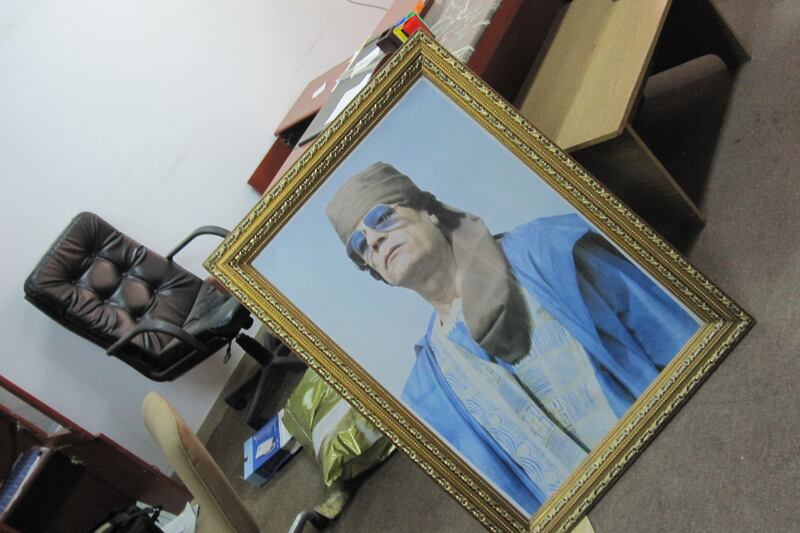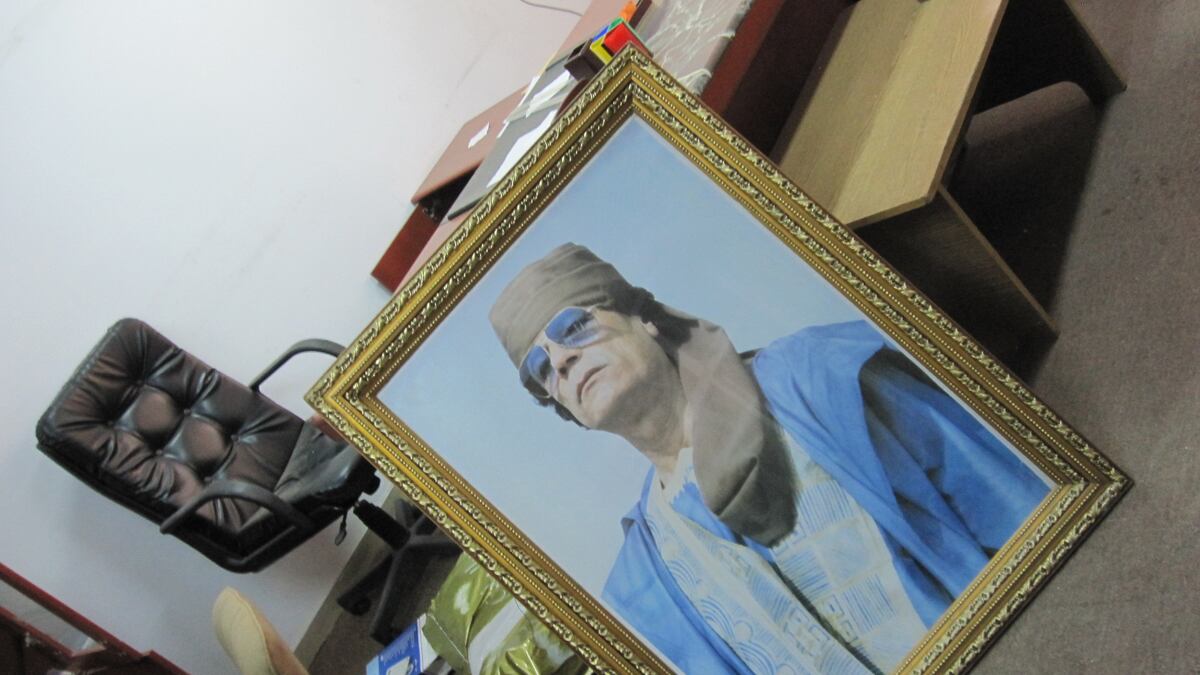Mahmoud al Kish takes a look at the stairs descending into the basement of the Internal Security building in central Tripoli and shakes his head. “I can’t go down,” he says, squeezing his eyes shut. Al Kish, 32, was kept as a prisoner in the building for 11 months in 2003. During the first week of his detention, he was handcuffed to a staircase handrail and security thugs punched and kicked him each time they walked by. “I was eating, sleeping and, excuse me, peeing in the same place,” al Kish says with a look of shame. “One week! One week!”
Muammar Gaddafi kept his brutal regime in place for more than four decades by layering security agency on top of security agency to create a vast network for monitoring ordinary Libyans. No one could be sure that a chat on the phone or a conversation in a café wasn’t being overheard or recorded by regime informers. Citizens could be nabbed from their homes because of the slightest suspicion of anti-regime activity and disappear for years. And sometimes regime goons didn’t appear to have any reason at all: al Kish was arrested as he walked home after praying at a local mosque.
The paranoid regime had many sites around the capital where they interrogated, tortured and imprisoned detainees. One of the most feared was the Internal Security building. Many of the offices in the building were trashed after the rebels rolled into Tripoli: case files are scattered across rooms, windows and doors have been smashed and cabinets have been pried open and emptied. But the material left behind presents a revealing—and odd—glimpse into one the most feared security services of the Gaddafi regime. “Yes to human rights,” a framed poster says on an eerily deserted top floor. “And no to human traitors.”
ADVERTISEMENT

On the ground floor of the building, the security reps ran a sophisticated Internet monitoring center. There are hundreds of pages of email exchanges and chats as well as detailed lists of email accounts being scrutinized. Colorful charts explain how to intercept and transcribe messages, as well as the steps necessary to collate and process various kinds of intelligence. One graph lists a variety of data interception methods including “full country traffic monitoring.”
One of the largest caches of documents and case files, spread across the second floor in the building, shows just how meticulously the regime followed Islamist groups and the severity with which they dealt with them. There are hundreds and hundreds of light green case files crammed with typed reports, hand-written notes, email records, photos and even CDs, tracking the movement and activities of Islamists. The records show the government was tracking at least seven distinct Islamist groups active in the country, including the Libyan Islamic Fighting Group which had many members who fought in Afghanistan in the '80s. The bio of each individual usually notes their nom de guerre, group affiliation, the suspect countries visited (Afghanistan and Pakistan are frequently listed) and the individual’s whereabouts. There are also extensive records of thousands of Islamist prisoners.
The case file of an inmate named Saadi, a native of the eastern town of Ajdabiya who was arrested in the summer of 2005, is typical. Saadi traveled to Iraq in 2004 and was arrested when he came back to Libya the following year. The case file notes that he confessed—most likely under torture—to having fought with Abu Musab Zarqawi in Iraq. The records also show that Saadi confessed to plans to attack foreign companies in Libya. He was charged with jihad and given a sentence of 10 years.
Also on the second floor are disturbing “how-to” manuals for building improvised explosive devices and mixing explosive chemicals, including step-by-step instructions and photos. One illustration shows a large explosive similar to a missile that can be mounted on a small boat. It’s not clear whether these are materials that the security agents confiscated from detainees or were gathering themselves as the regime crumbled.
It wasn’t all work for the security goons in the building. Some of the material left behind shows they had plenty of distractions too. There is a copy of an action movie called Behind Enemy Lines: Colombia in one office as well as the first-person shooter videogame “Call of Duty.” There’s also a copy of the steamy 1950s novel The World of Suzie Wong which details the love affair between a British artist and a Chinese prostitute.
While the agents were amusing themselves upstairs, ordinary Libyans were suffering in the basement. After he was handcuffed to the stairway rail, al Kish was transferred into a 12-by-10-foot room with a prisoner who had been kept there for 15 years. There was a single toilet and no window. "It was making me crazy,” says al Kish. “I didn’t see the sun for months.” al Kish’s father eventually worked family connections to get him out after nearly a year. To this day al Kish doesn’t know why he was detained. “If I met any of the people who kept me there I would shoot them,” he says.






